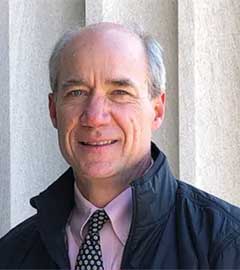
Behind the Climate Action Plan: Bill Colehower, Director, Project Planning, Campus Construction

What is a typical day like for you at MIT?
For me, there does not seem to be a typical day at MIT, and that keeps my job very exciting. Much of my team’s efforts are focused on identification and prioritization of deferred maintenance needs around the Cambridge campus, at Bates in Middleton and at the Millstone Haystack Complex in Westford. With over 13 million square feet, there is lots to prioritize. One of the questions that Taya Dixon (Program Manager, Capital Renewal Planning) and I are always asked by leadership is, "Which of the problems (deferred maintenance needs) are the worst of the worst?" As we look at all the renewal needs, we are also seeking to understand what other problems can we fix by renewing the worst of the worst systems. For example, if we have an air handler that is causing problems and in need of renewal, it is possible that by replacing this equipment we can install a unit that is more energy efficient? Will provide greater comfort to the occupants of the building? And, on top of that, will it reduce the amount of time and money that Repair and Maintenance will need to spend fixing the equipment? In many ways, a typical day for me and my team is similar to a game of three dimensional chess.
What are some ways your work and your team support MIT’s climate action plan to reduce on campus emissions and utilize the campus as a test bed for change?
We are regularly collaborating with research teams on a number of fronts to both improve our campus and advance research within academic departments. One of the most exciting opportunities is a collaboration with faculty in the School of Architecture around using drones, AI, and energy modeling to quantify and validate energy savings opportunities for the campus. With this research we are hopeful that the faculty and postdocs can refine their products and help others around the world solve similar problems and at the same time make strides in mitigating the carbon impact of our 13 million square foot campus. MIT’s campus is a huge test bed with lots of opportunities. While me and my team need to remain focused on solving real operational problems, we recognize that MIT is unique and that merging operational thinking with research thinking will help researchers understand the very real operational issues and it will also help my team feel that they connected to and contributing to MIT’s world class research.
What’s one thing you wish people knew about Campus Construction and how it keeps MIT running?
That we are very good (the BEST of the BEST) at playing three dimensional chess.

